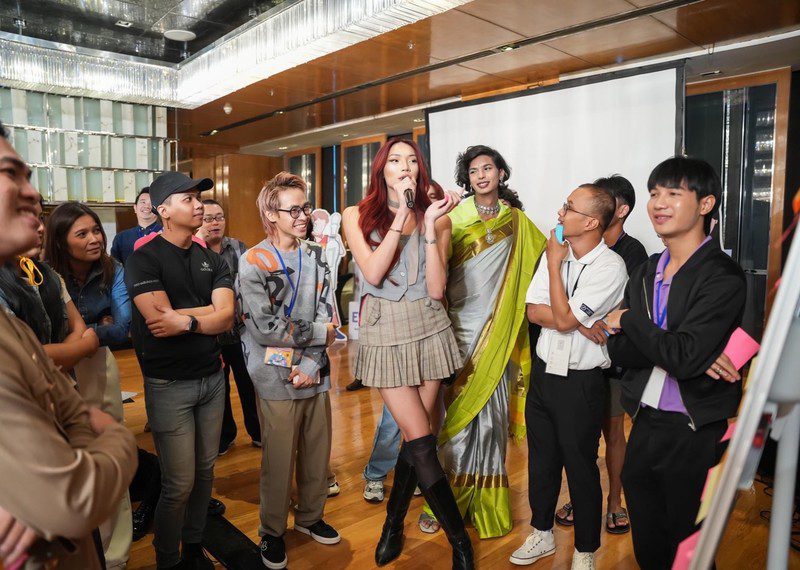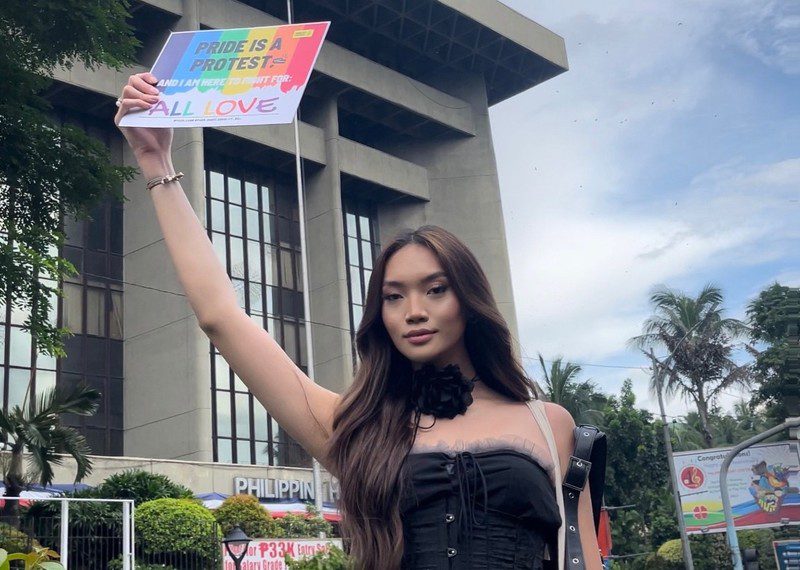Growing up, Aisia Castelo, 24, from the Philippines, struggled to understand her identity as a young transgender woman. Now, through her activism, she’s determined to raise her voice, share her story and make sure other young people can safely access the resources they need online, without the threat of abuse or harassment.
“It was hard growing up in the Philippines, especially when I was trying to figure out my life and my identity.
When I was younger, we didn’t have the resources that other people have now, especially as a transperson. I wanted to start hormones, but I had no idea how to access them. I thought I might be transfeminine, but I didn’t know what to do next. I never had the language for it, until I was 18 – that was the first time I saw the term transgender and thought, ‘That could be me.’
Growing up in the province meant we lacked so many resources. Medical advice on the issue was unavailable, so I couldn’t just book a doctor’s consultation. I had to seek out other trans people and communities for answers and ask what hormones to take.
Digital risks
Tik Tok and Instagram let me access the information I lacked. However, the resources were not always accurate, and it meant people could take the wrong pills as the medication is largely unregulated.
As well as medical risks, I faced abuse and harassment while I was coming to terms with my identity. I went to a Catholic high school, where I wasn’t allowed to have long hair and I had to dress as a male. By the time I was ready to graduate, I had started playing with my femininity and playfully cross dressing. I was around 15 or 16, when I finally felt comfortable in who I was.

By the time it came to our version of prom, I felt ready to dress as a girl. When I got to school, I put on my wig, a skin-tight dress, a kimono I stole from my mum, and a crown. When the discipline officer saw me, they pulled me aside and told me if I wanted to join the party, I would have to go home and get changed. I was so embarrassed – I was on my knees, crying to my advisor, saying “What is this? Why do I have to go through this?’ As a young trans person in the Philippines with so many restrictions, I couldn’t live my authentic life. My right to enjoy school life, as myself, was stripped away – that’s why I am advocating for my rights now.
A supportive family
Luckily, my family was supportive. My older sister is trans, so she carried the burden of coming out to the family. My mum bought me my first pair of knickers. It was such a full circle moment – I was lucky to have that support in my family, but that’s not to say life on the outside was easy.
As a young person, I had so much confidence. I was excited to go out and wear my wig, a crop top and my skirt – I wanted to live in this delusional world, where I could be who I wanted to be. But as a young person, I didn’t have the language to convey the experiences that followed, whether that was abuse or harassment.

I studied psychology at university, and I remember taking the bus home after a volunteer shift at the transgender clinic. It was past 11pm and my province was two hours away. I felt like a confident woman with my wig, full make up, heels, when suddenly a random man sat next to me and started kissing me.
At that moment, I didn’t understand what was happening, I thought my womanhood was being validated, so I was like, ‘OK, he sees me as a girl, he thinks I am sexy and hot.’ But I look back on it now and realise that I was sexually abused on a bus, and I didn’t even know it. I didn’t know how to label those things.
The sad reality of activism
As young trans woman from the Philippines, activism has come naturally to me. However, the atmosphere in my country is making it hard to speak out. Red-tagging has become prevalent and if you’re someone who believes in human rights, you’re tagged as a threat to society or a national terrorist. Young people have been red-tagged online and their personal information leaked across Facebook. People are missing because the national police have taken them. That’s the sad reality of activism in the Philippines. It’s engrained in our culture.
I have grown up in an unkind world. As well as violence and abuse, I have experienced hate, bullying and censorship because of my public advocacy. Last year, I was part of a social movement around election time. Instagram removed my posts because they ‘violated community guidelines’, but I keep going despite the dangers. If you stand up for something, you’re not a threat to national security. But for that to change, we need to change the way activism is seen in the Philippines.
Supporting other young activists
Although I am at risk, I am trying my best to support other young people through my activism. During the elections last year, I was part of the large social movement where I met so many young people – many who weren’t legal to vote – volunteering their time. As I was a little older than them, I became their ‘mother’. I would share advice with them about gender identity. They were aware of my public advocacy online, especially as a transgender woman. They would ask about clinics and hormone replacement therapy and thank me for being informative.

Ninety percent of young people in the Philippines are online, so it was good to meet other young activists in person. While the digital space is accessible to young people it is having a dangerous impact on our wellbeing. Many of the bigger platforms allow hate to thrive, because they make money from it. It makes it harder for us to exist online as we don’t have access to safety protocols that protect us and let us enjoy our own digital rights.
Recently, I have been working with Amnesty International on its new youth led project, RIGHTS CLICK, which is enabling children and young people to co-create online platforms and other digital technologies that protect their rights – and their health and well-being. As part of the project, we are listening to young peoples’ stories and learning about the challenges they face, so we can provide solutions together.
It’s sad that we are forced to speak out and bear the burden of being an activist – but this project is building a community of activists who are working together to build a safer digital world.
I want to speak out. If I don’t, how will other generations hear our experiences and how will the system change? It needs come from us. There are laws that are made for transwomen, made by cis gender people – it doesn’t make sense. We know what we need. I won’t be silenced, in person or online.”


